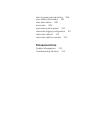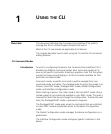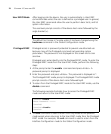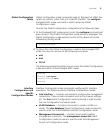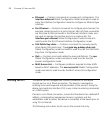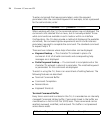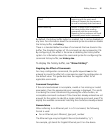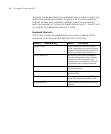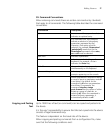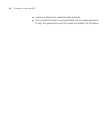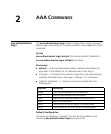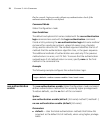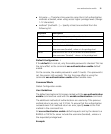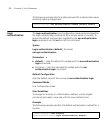
Editing Features 25
By default, the history buffer system is enabled, but it can be disabled at
any time. For information about the command syntax to enable or disable
the history buffer, see history.
There is a standard default number of commands that are stored in the
buffer. The standard number of 10 commands can be increased to 216.
By configuring 0, the effect is the same as disabling the history buffer
system. For information about the command syntax for configuring the
command history buffer, see history size.
To display the history buffer, see “show history”.
Negating the Effect of Commands
For many configuration commands, the prefix keyword no can be
entered to cancel the effect of a command or reset the configuration to
the default value. This guide describes the negation effect for all
applicable commands.
Command Completion
If the command entered is incomplete, invalid or has missing or invalid
parameters, then the appropriate error message is displayed. This assists
in entering the correct command. By pressing the <Tab> button, an
incomplete command is entered. If the characters already entered are not
enough for the system to identify a single matching command, press ? to
display the available commands matching the characters already entered.
Nomenclature
When referring to an Ethernet port in a CLI command, the following
format is used:
■ For an Ethernet port: Ethernet_type port_number
The Ethernet type may be Gigabit Ethernet (indicated by “g”).
For example, g3 stands for Gigabit Ethernet port 3 on the device.
Up-arrow key
Ctrl+P
Recalls commands in the history buffer,
beginning with the most recent
command. Repeats the key sequence
to recall successively older commands.
Down-arrow key Returns to more recent commands in
the history buffer after recalling
commands with the up-arrow key.
Repeating the key sequence will recall
successively more recent commands.



